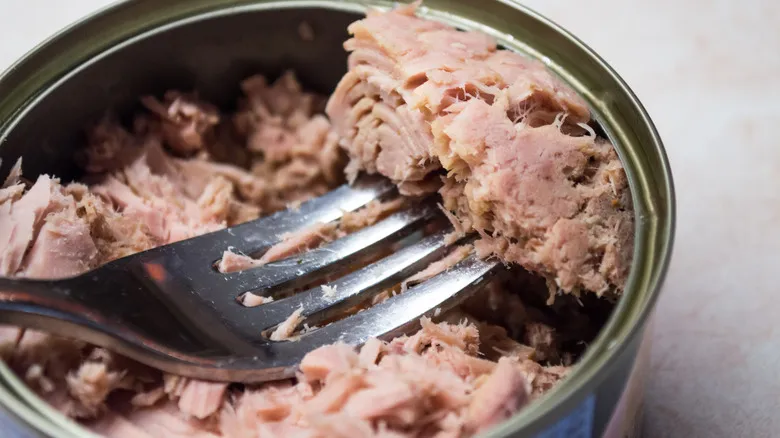Big fish, little fish, and mercury

Once we explore the various types of tuna available, you'll understand why bigeye tuna has higher mercury levels than many other tuna species. Bigeye tuna grow more slowly and can reach lengths of about 5 ½ feet. This combination of growth factors results in this fish accumulating more mercury by the time it reaches your plate. Interestingly, the FDA does not include bluefin tuna in its mercury content rankings for commercial fish. However, as the largest tuna species, capable of growing over 13 feet, bluefin—commonly used in sushi—contains more mercury than smaller varieties like yellowfin, according to a 2010 study by the American Museum of Natural History and Rutgers University.
Canned light tuna has the lowest mercury levels among tuna options, with skipjack being the most frequently used fish in this product. Skipjack is the smallest tuna species, averaging around 3 feet in length. Canned albacore, another larger tuna species, has a higher mercury content compared to most canned tuna, containing approximately three times the mercury found in canned skipjack and other light tuna on average. (However, it's important to note that most people can safely consume canned albacore in moderation.)
Canned tuna over fresh tuna?

Interestingly, when you compare fresh albacore and skipjack to their canned counterparts, the canned versions generally have lower mercury levels. This could be because the fishing industry tends to catch younger fish for canning, while older fish are sold as fillets. Younger fish have not had as much time to accumulate mercury in their bodies compared to their older counterparts. It's important to note that the FDA does not list canned yellowfin tuna in its standard guidelines. However, fresh or frozen yellowfin tuna is included, and it has a higher mercury content than canned albacore, though it still has lower levels than fresh or frozen bigeye tuna.
Now that you know that canned light tuna has the least mercury, consider following the culinary advice of kitchen legend Julia Child to enhance your tuna salad sandwiches. Adding lemon juice, capers, and cornichons can make for a fresher and crunchier dish. Incorporating seafood, including tuna, into your weekly meal plan is a great idea, and now you know how to do it safely.
Recommended

Is It Actually Dangerous To Eat Burnt Bread?

This Non-Dairy Butter Is Made From CO2 And Can Help Save The Planet

Does Brining Meat Make An Actual Difference?

Is Tilapia Really A Garbage Fish?
Next up

